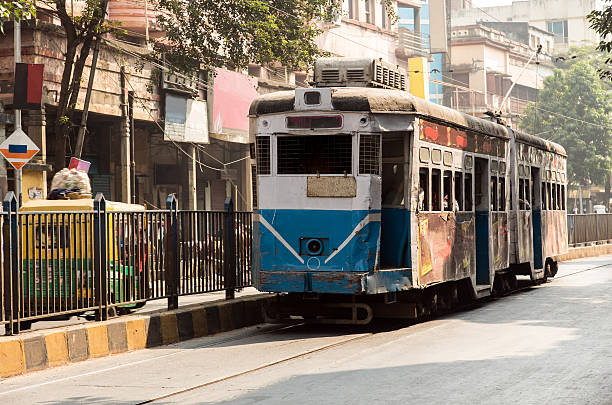

On 25th September, 2024, West Bengal Transport Minister announced the termination of tram services in Kolkata (it’s not called a tram train) citing a reason that they contribute to traffic congestion. Tram services across the city have been halted, except for one route from Esplanade to Maidan.
Transport Minister Snehasis Chakraborty told reporters, “To ensure that people don’t get late to office during peak hours due to traffic jams, we have to take certain difficult measures, including the withdrawal of trams.”
However, Kolkatans did not welcome this announcement. Then, why is the city being robbed off its 150 year old heritage of Trams?
Decision to discontinue Trams in Kolkata
In the light of the termination of tram services in Kolkata, there have been protests, suggestions and requests from the citizens. Many view trams as a cost-effective, environment friendly mode of transport that has not caused any serious disadvantages. Other than this, trams are also part of the rich heritage of the city. In the pre-independence times, trams were present in cities like Chennai, Mumbai, Patna and Nasik, where they were introduced by the British. During that time, horse drawn cars ran on the tracks.
Soon with time, the first electric power tram made its debut in 1900, in Kolkata. This was the first step towards modernisation of city transport. A century ahead, the first AC trams were introduced in 2013, which marked another step of modernisation and evolution of Kolkata tram services. Although the tram started to fade from the city in the 21st century, it held an important position in the memories of its users.
In light of this cultural importance of tram services, the Calcutta High Court, earlier this year, directed the state of West Bengal and its transport department to form a committee to evaluate how trams can be ‘restored, maintained and preserved’. This move was in favour of the protesting residents of Kolkata. But in spite of this, the government decided to put a halt on trams. Media reports from the city, around August 5, 2024, make it evident that the work of discontinuation of tram track services is underway.
Responding to the arbitrary actions taken by the state government, a Public Interest Litigation group filed a contempt application against the West Bengal Transportation Corporation (WBTC) for violating the Calcutta High Court order. The court then immediately directed that no further removal of tram tracks be carried out in Kolkata, until any further notice.
Why is the Future of Trams in Kolkata Important?
Introduced in 1873 by the British, the tram is the oldest and most popular mode of transport in Kolkata. It is true that with modernisation, trams were left behind. Other than electrification and air-conditioning, not much attention was paid to its redevelopment, innovation and urban design. And so, the trams of Kolkata provide an opportunity to government and policy makers to design a modernisation plan that is both eco-friendly as well as keeps in mind the less effluent of the city.
Termination of a public transport service in the city to make way for private cars is a decision against the middle-class and marginalized living in Kolkata. While cities should increasingly move towards sustainable urban mobility, the West Bengal Government is all set to demote the city to a less eco-friendly model of transport. This will give way for private car parking and increasing traffic over an affordable public transport.
In February this year, the city celebrated 150 years of its iconic tram services. Based on the European train models, particularly those found in Paris, Vienna, and London, today Kolkata’s trams battle the test of time. And its contender is the private vehicle of the rich.
Source link
Modified by Maaaty at Cheap Generic Pharmacy

